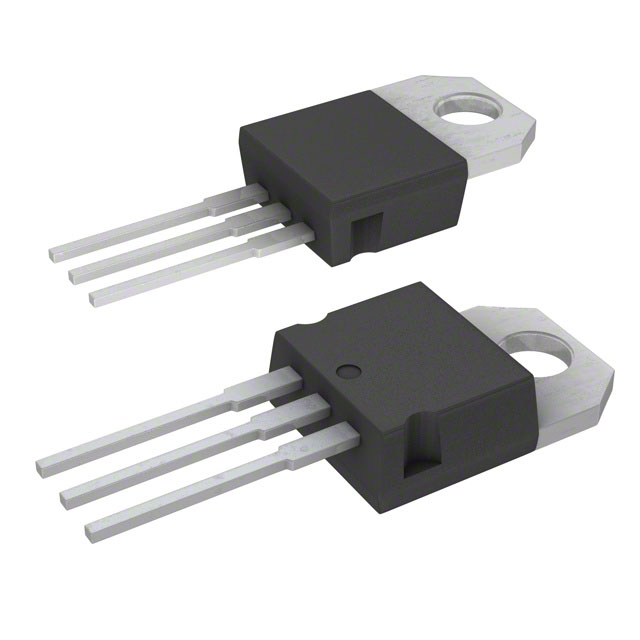STPR620CT
Product Overview
STPR620CT belongs to the category of power rectifiers. It is commonly used in applications requiring high efficiency and low power loss. The characteristics of STPR620CT include its high current capability, low forward voltage drop, and fast reverse recovery time. It is typically packaged in a TO-220AB package and is available in various quantities.
Specifications
- Maximum Average Forward Current: 6A
- Peak Forward Surge Current: 150A
- Reverse Voltage: 200V
- Forward Voltage Drop: 0.95V
- Reverse Recovery Time: 35ns
Detailed Pin Configuration
STPR620CT has a standard TO-220AB pin configuration with three pins: 1. Anode 2. Cathode 3. Gate
Functional Features
STPR620CT offers high current capability, making it suitable for high-power applications. Its low forward voltage drop ensures minimal power loss, while the fast reverse recovery time enhances efficiency.
Advantages and Disadvantages
Advantages
- High current capability
- Low forward voltage drop
- Fast reverse recovery time
Disadvantages
- Higher cost compared to standard rectifiers
- Larger physical size due to TO-220AB package
Working Principles
STPR620CT operates on the principle of rectification, converting alternating current (AC) into direct current (DC). When a positive voltage is applied to the anode with respect to the cathode, current flows from the anode to the cathode. Conversely, when a negative voltage is applied, the rectifier blocks the current flow.
Detailed Application Field Plans
STPR620CT is commonly used in power supply units, battery chargers, and motor drives where high efficiency and low power loss are crucial. Its high current capability makes it suitable for applications requiring substantial power handling capacity.
Detailed and Complete Alternative Models
Some alternative models to STPR620CT include: - STPR1020CT - STPR1620CT - STPR2020CT
These alternatives offer similar characteristics and specifications, providing flexibility in design and application.
In conclusion, STPR620CT is a reliable power rectifier with high current capability, low forward voltage drop, and fast reverse recovery time, making it suitable for various high-power applications.
Word Count: 298
기술 솔루션에 STPR620CT 적용과 관련된 10가지 일반적인 질문과 답변을 나열하세요.
What is STPR620CT?
- STPR620CT is a high voltage power Schottky rectifier designed for high frequency switching applications.
What is the maximum repetitive peak reverse voltage of STPR620CT?
- The maximum repetitive peak reverse voltage of STPR620CT is 200V.
What is the maximum average forward current of STPR620CT?
- The maximum average forward current of STPR620CT is 6A.
What are the typical applications of STPR620CT?
- STPR620CT is commonly used in switch mode power supplies, freewheeling diodes, and polarity protection diodes.
What is the operating junction temperature range of STPR620CT?
- The operating junction temperature range of STPR620CT is -65°C to +175°C.
What is the forward voltage drop of STPR620CT at 3A?
- The forward voltage drop of STPR620CT at 3A is typically 0.75V.
Does STPR620CT have a low leakage current?
- Yes, STPR620CT has a low leakage current which makes it suitable for high efficiency applications.
Is STPR620CT suitable for high frequency switching applications?
- Yes, STPR620CT is specifically designed for high frequency switching applications.
Can STPR620CT be used in automotive electronic systems?
- Yes, STPR620CT can be used in automotive electronic systems due to its high voltage capability and rugged design.
What are the key benefits of using STPR620CT in technical solutions?
- The key benefits of using STPR620CT include low forward voltage drop, high frequency operation, and low leakage current, making it ideal for high efficiency and compact designs.


